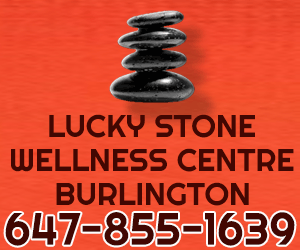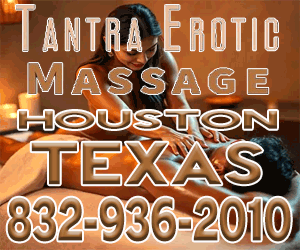Valentina R
Member
- Joined
- Sep 11, 2009
- Messages
- 53
- Reaction score
- 0
- Points
- 6
I made a post on my blog today that I wanted to post here as well:
My Issue with Core Strengthening
Core strengthening is a popular treatment modality among physical therapists, as well as being popular in the mainstream of exercise. There have been a number of articles written critical of core strengthening (see The Myth of Core Stability: http://www.google.com/url?sa=t&sour...mN8xCaRP2-yLHspQA&sig2=9InG9yIZlTrHHc3h3ww0kw). Based on my experience, one serious flaw has to do with tightness that most physical therapists pay little attention.
Tightness of the anterior (front) spinal and pelvic musculature can play a great role in back, sciatic, and pelvis pain. Shortness or tightness of the iliopsoas musculature can cause the lumbar spine to become drawn forward and downward. The psoas originates at the transverse process of L1-L5, with fascial slips into each of the lumbar discs. Tightness of one or both sides of the psoas and surrounding fascia can lead to commonly felt back pain and dysfunction. I find this a repeating theme among patients with back pain and one that I spend a great deal of time in education and treatment. Repeated exercise can lead to shortening of a muscle, if not properly stretched.
Some common symptoms that can result from shortness in this region are pain with prolonged standing, or standing while leaning forward (doing dishes), pain on rising to stand after sitting, especially when you are leaning forward (computer use or bleacher sitting), and lying flat on your back with the legs flat.
If the psoas and surrounding fascia is restricted, further strengthening these areas easily leads to further examassageplanetation of the back pain. This is what often results from core strengthening. The traditional medical model, including the traditional physical therapy model, pays little attention to these interplays. While your therapist may have put you on a general stretching program for your pain, the prescribed exercises seldom target the hip flexors. Strengthening the trunk and back to better support is a repeating theme among the patients I see who have not been helped (or have been hurt) by this approach to pain.
Myofascial release stresses identifying the restricted or shortened musculature and soft tissue that may be causing excessive strains on the body. In my Foundations in Myofascial Release Seminars™, I stress a unique deep model of evaluation as a part of Myofascial Release training. Without this proper type of evaluation, this tightness is often overlooked. Demand more of your therapist. Don’t settle for what each and every back pain patient receives. No two cases are alike, so why allow yourself to be treated by everyone else?
Walt Fritz, PT
http://www.MyofascialResource.com
It is interesting that I chose an article by Lederman to bring doubt on core strengthening, even though he wrote the paper mentioned in this thread here:
http://www.massageplanet.com/forum/viewtopic.php?f=22&t=22177
He certainly chooses topics that pull folks into action.
What are your thoughts on core strengthening?
Walt
My Issue with Core Strengthening
Core strengthening is a popular treatment modality among physical therapists, as well as being popular in the mainstream of exercise. There have been a number of articles written critical of core strengthening (see The Myth of Core Stability: http://www.google.com/url?sa=t&sour...mN8xCaRP2-yLHspQA&sig2=9InG9yIZlTrHHc3h3ww0kw). Based on my experience, one serious flaw has to do with tightness that most physical therapists pay little attention.
Tightness of the anterior (front) spinal and pelvic musculature can play a great role in back, sciatic, and pelvis pain. Shortness or tightness of the iliopsoas musculature can cause the lumbar spine to become drawn forward and downward. The psoas originates at the transverse process of L1-L5, with fascial slips into each of the lumbar discs. Tightness of one or both sides of the psoas and surrounding fascia can lead to commonly felt back pain and dysfunction. I find this a repeating theme among patients with back pain and one that I spend a great deal of time in education and treatment. Repeated exercise can lead to shortening of a muscle, if not properly stretched.
Some common symptoms that can result from shortness in this region are pain with prolonged standing, or standing while leaning forward (doing dishes), pain on rising to stand after sitting, especially when you are leaning forward (computer use or bleacher sitting), and lying flat on your back with the legs flat.
If the psoas and surrounding fascia is restricted, further strengthening these areas easily leads to further examassageplanetation of the back pain. This is what often results from core strengthening. The traditional medical model, including the traditional physical therapy model, pays little attention to these interplays. While your therapist may have put you on a general stretching program for your pain, the prescribed exercises seldom target the hip flexors. Strengthening the trunk and back to better support is a repeating theme among the patients I see who have not been helped (or have been hurt) by this approach to pain.
Myofascial release stresses identifying the restricted or shortened musculature and soft tissue that may be causing excessive strains on the body. In my Foundations in Myofascial Release Seminars™, I stress a unique deep model of evaluation as a part of Myofascial Release training. Without this proper type of evaluation, this tightness is often overlooked. Demand more of your therapist. Don’t settle for what each and every back pain patient receives. No two cases are alike, so why allow yourself to be treated by everyone else?
Walt Fritz, PT
http://www.MyofascialResource.com
It is interesting that I chose an article by Lederman to bring doubt on core strengthening, even though he wrote the paper mentioned in this thread here:
http://www.massageplanet.com/forum/viewtopic.php?f=22&t=22177
He certainly chooses topics that pull folks into action.
What are your thoughts on core strengthening?
Walt























































































 forgot.
forgot. 





